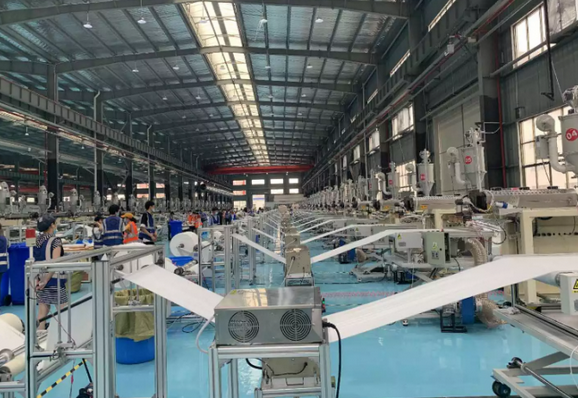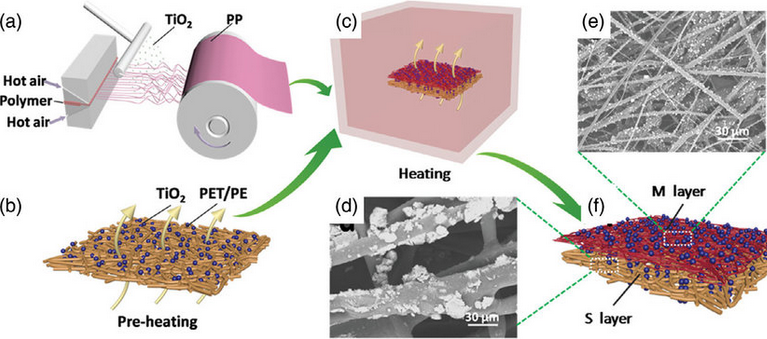Spunbond and meltblown are two different types of nonwoven fabric. Do you know the difference between spunbond and meltblown process? The two important polymer-extrusion based technologies that are mainly used to convert the molten polymer into nonwoven fabrics are spunbond technology and meltblown technology.
Spunbond vs Meltblown Process

1.Spunbond technology
In the spunbond technology, usually a thermoplastic fibre forming polymer is extruded to form fine filaments fibres of around 15–35 micrometer diameter. The filaments are attenuated collected on a conveyor belt in the form of a web. The filaments in web are then bonded to make spunbond nonwoven fabric.
2.The meltblown technology
The meltblown technology is based on meltblowing process, where, usually, a thermoplastic fiber forming polymer is extruded through a linear die containing several hundred small orifices.

Convergent streams of hot air (exiting from the top and bottom sides of the die nosepiece) rapidly attenuate the extruded polymer streams to form extremely fine diameter fibers (1–5 micrometer). The attenuated fibers are subsequently blown by high-velocity air onto a collector conveyor, thus forming a fine fibered self-bonded meltblown nonwoven fabric.
Key Differences Between Meltblown and Spunbond Nonwoven Fabrics
| Property | Meltblown Nonwoven Fabric | Spunbond Nonwoven Fabric |
|---|---|---|
| Fiber Diameter | Fine fibers (1-5 microns) | Thicker fibers (10-20 microns) |
| Filtration Efficiency | High filtration efficiency due to fine fibers | Moderate filtration efficiency |
| Strength | Relatively weaker and less durable | Stronger and more durable |
| Weight | Lighter and softer | Heavier and more rigid |
| Production Cost | Higher due to the fine fiber production process | Lower, as it involves less complex machinery |
| Typical Applications | Medical masks, air filters, protective gear | Hygiene products, geotextiles, medical gowns |
Combining Meltblown and Spunbond Fabrics
In some applications, nonwoven fabric manufacturers combine both meltblown and spunbond technologies to take advantage of the unique properties of each. For instance, SMS nonwoven fabric (Spunbond-Meltblown-Spunbond) is a popular combination, where the spunbond layers provide strength and durability, while the meltblown middle layer offers excellent filtration performance. This fusion results in a material suitable for a wide range of applications, including medical protective garments, hygiene products, and filtration systems.
Which One Should You Choose?
When selecting between meltblown and spunbond nonwoven fabrics, the choice largely depends on the specific requirements of the intended application:
- For Filtration Applications: Meltblown fabric is preferred due to its superior filtration properties, particularly in face masks and air filtration systems.
- For Durability and Strength: Spunbond fabric is more suitable for applications that require higher tensile strength, such as geotextiles, industrial protective clothing, and disposable medical gowns.
- For Cost-Effectiveness: Spunbond fabrics are generally more cost-effective, making them a better choice for large-scale applications that do not require fine filtration.
